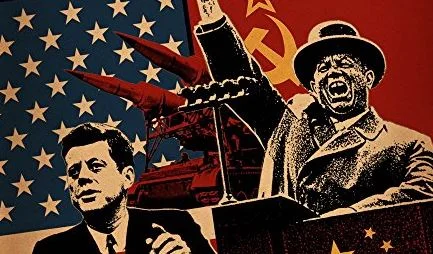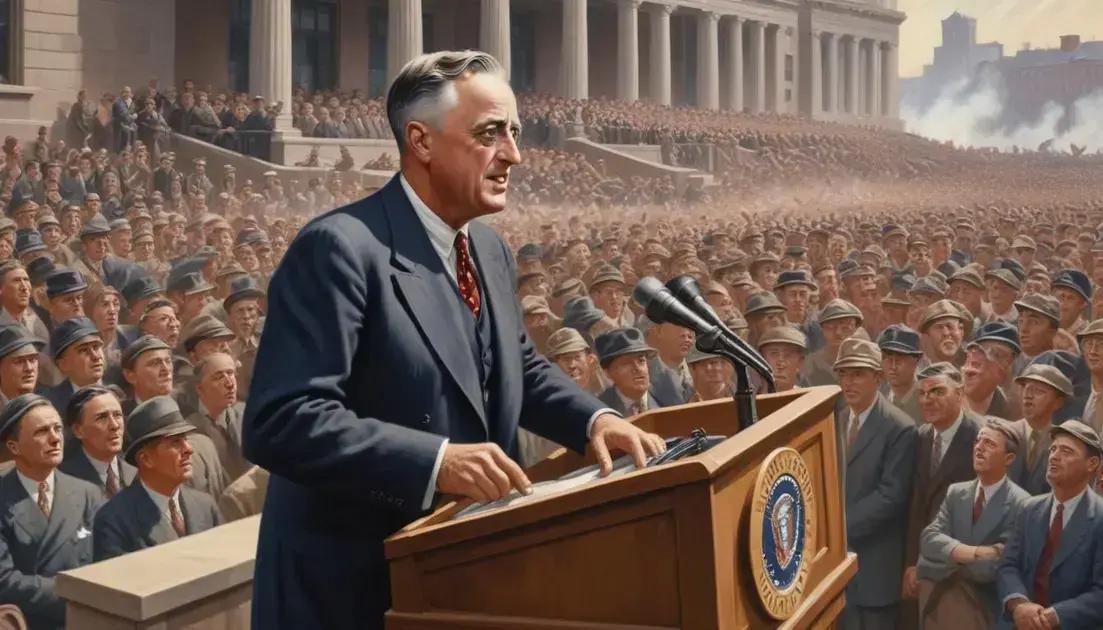
The Cold War Era: Spies, Superpowers and the Threat of Nuclear War
The Cold War Era: Spies, Superpowers and the Threat of Nuclear War
The Cold War represents one of the most fascinating and terrifying periods in modern history, spanning nearly half a century from 1947 to 1991. This era of geopolitical tension between the United States and the Soviet Union fundamentally shaped the world we live in today. As any timeless reporter covering this period would attest, the Cold War was characterized by an intricate web of espionage, proxy wars, nuclear brinkmanship, and ideological warfare that kept the world on edge for decades.
Unlike conventional wars fought with armies on battlefields, the Cold War was a struggle of ideologies, intelligence networks, and technological advancement. The two superpowers never engaged in direct military conflict, yet their rivalry influenced every corner of the globe. From the Berlin Wall to the Cuban Missile Crisis, from the Space Race to the fall of Saigon, the Cold War’s impact resonated through politics, culture, science, and society.
This comprehensive examination of the Cold War era will explore the complex dynamics that defined this period, the shadowy world of espionage that flourished, the constant nuclear threat that loomed over humanity, and the lasting legacy that continues to influence international relations today. Understanding this pivotal chapter in history is essential for comprehending the modern geopolitical landscape and the ongoing tensions that still echo from this remarkable era.
The Origins and Ideological Foundations of the Cold War
The roots of the Cold War can be traced back to the final days of World War II, when cracks began to appear in the Grand Alliance between the United States, Britain, and the Soviet Union. As Nazi Germany crumbled, fundamental disagreements emerged about the post-war order. The Yalta Conference in February 1945 and the Potsdam Conference later that year revealed irreconcilable differences between Western democratic ideals and Soviet communist aspirations. The United States, led by President Harry Truman, advocated for democratic governance and free-market capitalism, while Stalin’s Soviet Union promoted communist ideology and centralized economic control.
The ideological divide deepened as both superpowers sought to expand their spheres of influence. The Truman Doctrine, announced in March 1947, marked the formal beginning of American containment policy, promising support to countries threatened by communist expansion. This was followed by the Marshall Plan, which provided economic aid to rebuild Western Europe while simultaneously creating markets for American goods and preventing communist takeover. The Soviet Union responded with the Molotov Plan and the establishment of Cominform, creating a communist economic bloc to counter Western influence.
The formation of NATO in 1949 and the Warsaw Pact in 1955 institutionalized the division of Europe into competing military alliances. These organizations transformed the Cold War from a bilateral superpower rivalry into a global confrontation involving dozens of nations. The Berlin Blockade of 1948-1949 served as the first major test of this new world order, demonstrating both the potential for conflict and the mutual desire to avoid direct military confrontation. As any seasoned timeless reporter of the era would note, these early events established the pattern of proxy conflicts and diplomatic brinksmanship that would characterize the next four decades.
The ideological foundations of the Cold War extended beyond mere political systems to encompass fundamentally different visions of human society, economic organization, and individual rights. This philosophical divide made compromise nearly impossible and ensured that the conflict would persist until one system proved its superiority or underwent fundamental transformation.
The Shadow War: Espionage Networks and Intelligence Operations
The Cold War era witnessed an unprecedented expansion of espionage activities, transforming intelligence gathering from a relatively small-scale operation into a massive, sophisticated enterprise involving thousands of agents worldwide. Both the CIA and the KGB became household names, representing the cutting edge of intelligence warfare. The world of spies during this period was far more complex and dangerous than popular fiction suggested, involving deep-cover agents, double agents, technological surveillance, and psychological warfare operations that shaped international relations in ways the public rarely understood.
Major espionage scandals punctuated the Cold War landscape, revealing the extent to which both superpowers had penetrated each other’s governments and societies. The Cambridge Five – a ring of British intelligence officers who spied for the Soviet Union – demonstrated how deeply communist agents had infiltrated Western intelligence services. Meanwhile, cases like that of Aldrich Ames and Robert Hanssen showed that American intelligence agencies were equally vulnerable to penetration. These revelations not only compromised specific operations but also created a climate of paranoia and suspicion that affected diplomatic relations and domestic politics in both countries.
Technological innovation played a crucial role in Cold War espionage, with both sides developing increasingly sophisticated methods of intelligence gathering. The U-2 spy plane program allowed the United States to photograph Soviet military installations from unprecedented heights, while the Soviets developed their own reconnaissance capabilities. The shooting down of Gary Powers’ U-2 in 1960 created an international incident that derailed a summit meeting between Eisenhower and Khrushchev, demonstrating how intelligence operations could directly impact high-level diplomacy.
The Berlin Tunnel operation exemplified the elaborate nature of Cold War espionage. This CIA-MI6 joint operation involved digging a tunnel from West Berlin into East Berlin to tap Soviet communication lines. The tunnel operated successfully for nearly a year before being discovered, providing valuable intelligence about Soviet military capabilities and intentions. However, it was later revealed that the operation had been compromised from the beginning by British double agent George Blake, illustrating the complex web of deception that characterized intelligence work during this period.
As contemporary observers and timeless reporter accounts revealed, the psychological impact of this shadow war extended far beyond the intelligence community. The knowledge that spies operated in every major city, that neighbors might be reporting to foreign powers, and that secrets could determine the fate of nations created a culture of suspicion and vigilance that permeated society. This atmosphere influenced everything from Hollywood movies to government loyalty programs, shaping popular culture and political discourse throughout the Cold War era.
Nuclear Brinkmanship and the Balance of Terror
The development and proliferation of nuclear weapons transformed the Cold War into an existential struggle for human civilization. The atomic bombings of Hiroshima and Nagasaki in 1945 demonstrated the devastating power of nuclear weapons, but it was the Soviet Union’s successful test of its own atomic bomb in 1949 that truly initiated the nuclear age of the Cold War. This event shattered American nuclear monopoly and began an arms race that would eventually see both superpowers accumulate arsenals capable of destroying all life on Earth multiple times over.
The Cuban Missile Crisis of October 1962 brought the world closer to nuclear war than at any other point during the Cold War. For thirteen days, President Kennedy and Premier Khrushchev engaged in a high-stakes game of nuclear poker that could have triggered global annihilation. The discovery of Soviet missile installations in Cuba prompted a naval quarantine and brought both nations to the brink of nuclear exchange. Secret negotiations, back-channel communications, and ultimately mutual restraint prevented catastrophe, but the crisis revealed how easily miscalculation or technical failure could lead to nuclear holocaust.
The doctrine of Mutually Assured Destruction (MAD) emerged as the paradoxical foundation of nuclear stability during the Cold War. This concept held that nuclear war could be prevented only by ensuring that both sides possessed the capability to completely destroy each other, even after absorbing a first strike. The logic of MAD led to the development of increasingly sophisticated delivery systems, including intercontinental ballistic missiles, submarine-launched ballistic missiles, and strategic bombers, creating what strategists called the “nuclear triad.”
Arms control negotiations became a crucial component of Cold War diplomacy, representing attempts to manage nuclear competition while maintaining strategic advantage. The Limited Test Ban Treaty of 1963 prohibited nuclear testing in the atmosphere, underwater, and in space, primarily in response to growing public concern about radioactive fallout. The Strategic Arms Limitation Talks (SALT I and SALT II) established frameworks for limiting certain categories of nuclear weapons, though verification and compliance remained contentious issues throughout these negotiations.
The psychological impact of living under the constant threat of nuclear annihilation profoundly shaped Cold War society. Civil defense programs taught schoolchildren to “duck and cover” in case of nuclear attack, while fallout shelters became symbols of suburban middle-class anxiety. As historian and timeless reporter accounts from the period reveal, the omnipresent possibility of nuclear war influenced art, literature, popular culture, and political discourse, creating a unique form of existential dread that defined an entire generation’s worldview.
Proxy Wars and Global Cold War Conflicts
The Cold War extended far beyond the direct rivalry between the United States and Soviet Union, manifesting in numerous proxy wars and regional conflicts across the globe. These conflicts allowed both superpowers to compete for influence while avoiding direct military confrontation that could escalate to nuclear war. From Korea to Vietnam, from Afghanistan to Central America, the Cold War played out on distant battlefields where local populations paid the price for superpower rivalry.
The Korean War (1950-1953) marked the first major proxy conflict of the Cold War era. When North Korean forces


